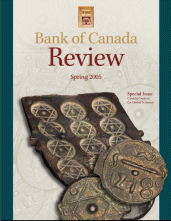Bank of Canada Review - Spring 2005
Available as:
PDF
Cover page
Moroccan Coin Moulds
This bronze mould from Morocco is part of the National Currency Collection, Bank of Canada.
Photography by Gord Carter, Ottawa.
